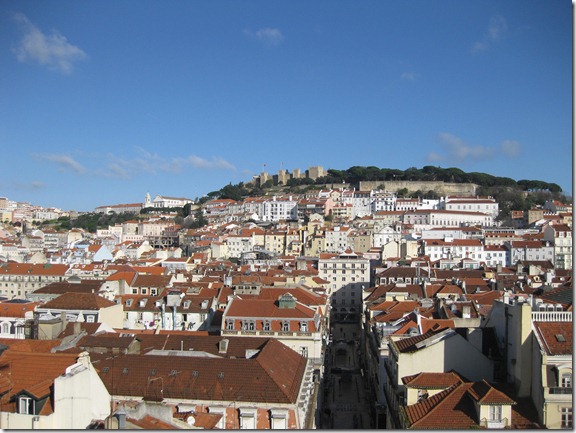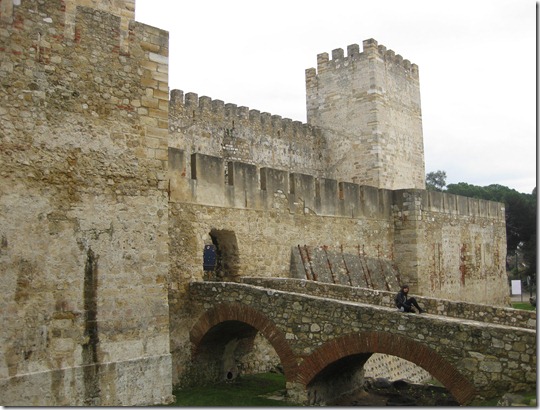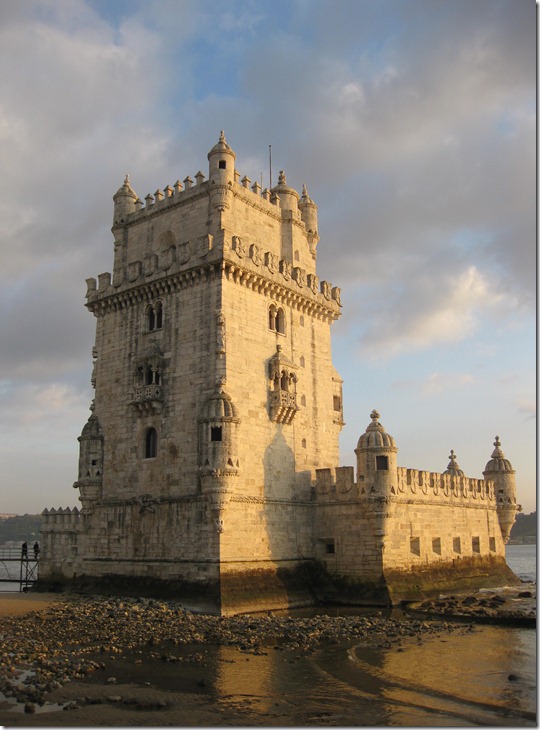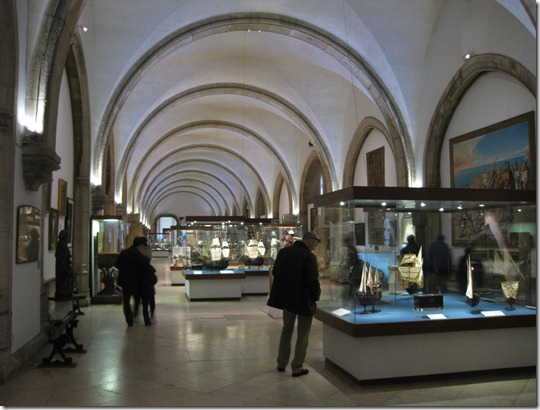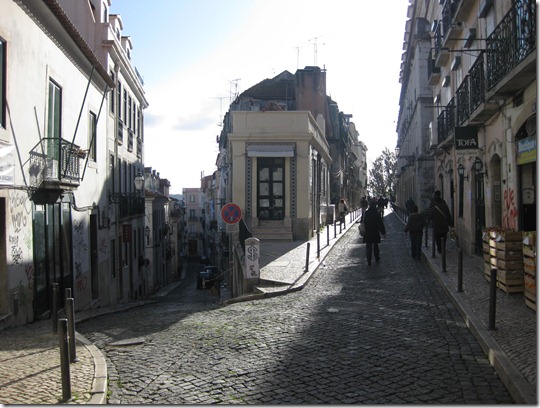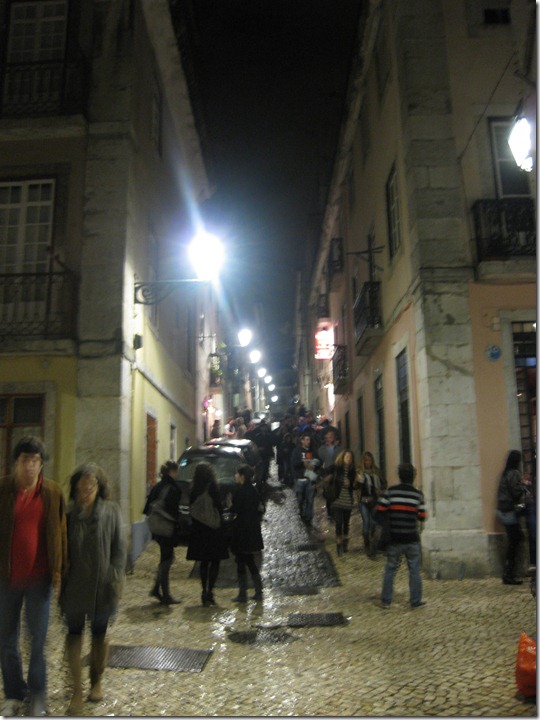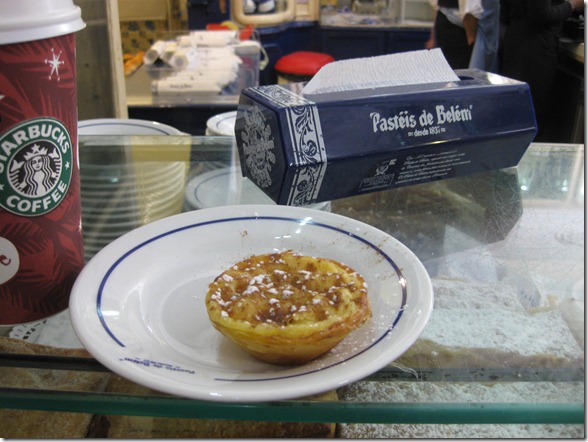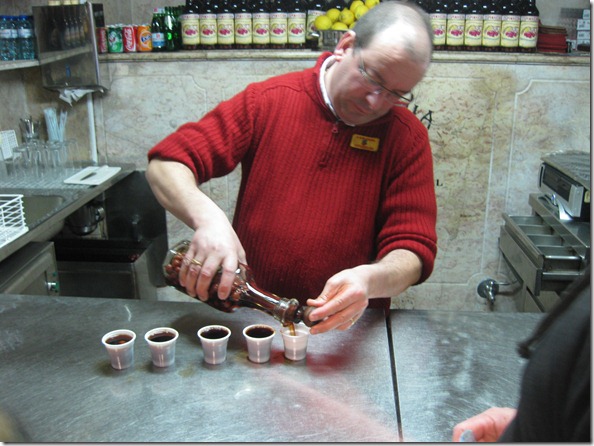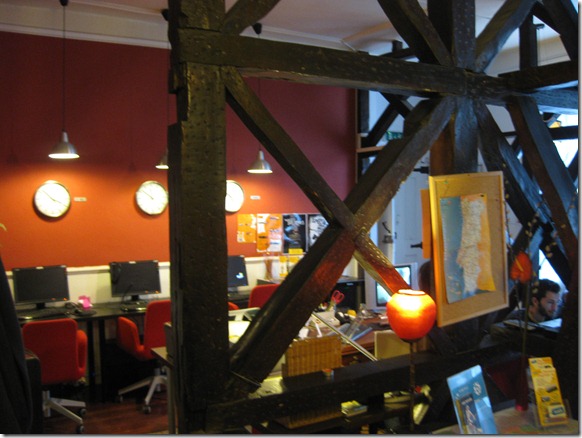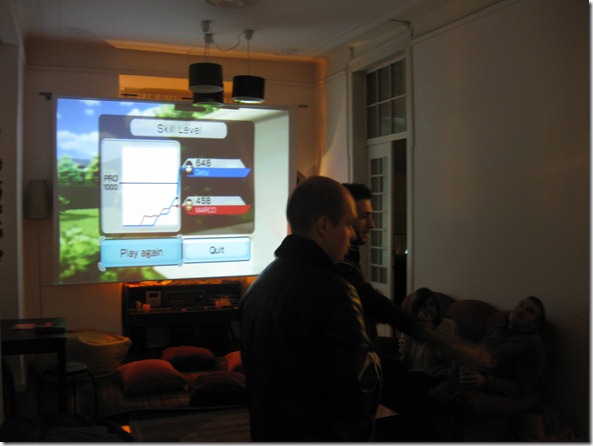Lisbon is a city that parties all night, is steeped in culture, is a bit rough around the edges and was the starting point of many great voyages of discovery. It’s southern European location allows it good weather through most of the year, making it a perfect place to escape the chill in London.
It’s a bit further afield than most destinations you’d routinely think of in Europe for a weekend away, but Lisbon’s trump card (and the rest of Portugal for that matter) lies in the fact that it’s in the same time zone as London. This allows for a longer than usual flight, without the significant hit to time once your arrive in a city you won’t soon forget.
Things to See and Do
Lisbon is a city that doesn’t immediately burst out at you with its sights. It’s a city you need to wander in, soaking up the atmosphere, the architecture and the heartbeat of the local lifestyle. The fact that Lisbon is built on seven hills (much like Edinburgh), makes getting around on foot a challenge at times. It does prove rewarding when you find yourself at a crossroads of four streets, each ascending or descending in a different direction and you think “how could anyone have built here, and how can anyone negotiate this place?â€.
Castelo de Sao Jorge
Built in the Middle Ages, the Castle of Sao Jorge is the main fortification in Lisbon that has withstood hundreds of years of invasions and earthquakes in the city.
Situated high above the city, it provides amazing views of the Tagus River and the skyline. There isn’t much to read about or see here, but it’s a worthwhile visit to appreciate what castles were like in this part of the world.
Belem Tower
Built in the late 16th century, Belém Tower is significant because of the role it played during Portugal’s lead in the Age of Discoveries. It was used as part of a defence network of the Tagus River on which it is built, along with various other fortresses along the coastline.
The tower was dedicated to the patron saint of Lisbon, St Vincent and commemorated the key expedition of Vasco de Gama to find a trade route to the Indies.
It is a stunning example of architecture from this time (it is a UNESCO World Heritage Site), and has 4 levels for different purposes including an armoury and a dungeon.
Jeronimos Monastery
A striking building both inside and out, it is located not far from Belem Tower and signifies the Portuguese Age of Discovery. Built between 1517 and 1550 and plagued with political and religious problems affecting construction, it is a fantastic example of Manueline architecture.
This is also a significant site for the entire European Union, as it is where the Treaty of Lisbon was signed on December 13, 2007. The Treaty of Lisbon brought together two other treaties to provide the constitutional basis for the European Union.
Portuguese Maritime Museum
Located in the west side of the Jeronimos Monastery, this museum holds tonnes of intriguing and important information relating to the long history of Portuguese maritime exploration.
It illustrates well the role the Portuguese played in the Age of Discoveries in the 15th to 17th centuries, explaining how they kicked off a European race for colonisation of the new lands in America and the East. Definitely well worth it if you’re super interested in how countries like Brazil, India, and those in Africa and Asia developed in the last few hundred years.
Bairro Alto
Wow, what to say about Bairro Alto. It really is a part of Lisbon best explored both during the day and night. During the day you can really appreciate what life must be like living here, taking note of the washing lines stringing across balconies and small enclaves and laneways.
At night however, it’s a totally different story. It’s as if half of Portugal comes out to play here, with the undulating streets absolutely PACKED with people. The entire neighbourhood is alive with activity, as people bar hop all night long. Don’t expect to get back to the hostel until at least 4am if you go out in Bairro Alto, with it’s eclectic mix of bars serving up everything from salsa, to rock to dance music.
You and your friends decide to leave a bar and you’ve still got a full drink? No problems, plastic cups are provided at the door so you can happily transfer your beer/cocktail into it and keep on to the next bar. So. Awesome.
Food/Drink
So I thought “hey, it’s Portugal right? Surely I could get myself some peri peri chicken?â€. Wrong. Either it’s a total farce (thanks Nandos), or you can’t get it in Lisbon, cos I looked, and found nada.
Alternatively however, there are a few things Lisbon does have that will whet your appetite.
Ever had a Portuguese Tart? Sure you have, they’re awesome. Well they originate from an area just outside of Lisbon called Belem, and are traditionally called Pasteis De Belem, The bakery that makes these has been doing so for hundreds of years, and keeps the recipe a closely guarded secret. Throughout the day there’ll be queues out the door to buy these, and rightly so because they taste amazing. With a bit of cinnamon and powdered sugar on top, phwoar.
Along with Spain, Portugal does cured meats really well. Expect to get a fantastic dried beef or pork sandwich anywhere in the city for cheap.
Alcohol wise, the local beer (Sagres) is a quality drop and you can get it anywhere – look for the red label. You can also get locally made Port from a lot of unassuming looking stalls, where the shopkeeper will pour it straight out of a tap in the side of the wall for you.
How to get there
You can get to Lisbon using easyJet from London Luton and London Gatwick airports. Alternatively, full service airlines such as British Airways and TAP Portugal (the Portuguese flag carrier) fly from London Heathrow to Lisbon.
After landing at the airport, there’s a number of different public transport options available to get to the city centre, with at least 5 buses that will get you there. My advice is to get the number 745 bus, which only costs €1,45 and will take you straight down into the centre of town.
Where to Stay
Now I need to be straight up and really clear about this, Lisbon has THE ABSOLUTE BEST hostels in Europe. At least three have consistently taken out the hostelbookers and hostelworld top hostel awards for a long time running, and once you check-in you’ll soon work out why.
I stayed at the Rossio Hostel, on the Praça da Rossio on the northern side of the inner city. It was a bit hard to find and wasn’t signposted well, but that didn’t matter once I got inside. Marco was one of the most laid back hostel managers I’d ever met, and made it feel more like I was staying at a mate’s place than in a hostel. Rossio Hostel has a huge projector in the main lounge room (which is filled with bean bags and couches) with a Nintendo Wii hooked up to it (I got my arse kicked by Marco in Wii Tennis, many times) ‎. They have a small fridge stocked with beer (only 1 euro!) and a fully equipped kitchen with a complimentary cooked breakfast daily.
‎. They have a small fridge stocked with beer (only 1 euro!) and a fully equipped kitchen with a complimentary cooked breakfast daily.
The rooms are clean and new, fitted out with solid timber bunk beds with reading lights and a little fabric cradle to hold your valuables at night. I met two awesome girls from Virginia, USA (and we all had a laugh comparing accents) in my room and a Brazilian bloke, all who I still have contact with today..
Each night there’s something going on. Whether it’s a game night, movie night or pub crawl (in my case), you won’t be sitting around bored here.
Get around in Lisbon
Walking is your best way of getting around in Lisbon, with most sights easily accessible on foot from downtown. Lisbon also has an extensive network of trams and buses along with the metro system, all run by Carris. You will need to take a tram to Belem, where a lot of the cool stuff to check out is located, which I’ll mention below.
An easy way to get from the low lying part of Lisbon to Bairro Alto is to take the Santa Justa’s Elevator. You can’t miss it, as it is absolutely huge and imposing on the middle of the city. Great views from the top also.
You could opt to buy a Lisboa Card at the airport, which allows you 24 (€14,85) or 48 (€25.50) hours of unlimited public transport and free/reduced price access to a lot of museums. If museums are your thing, then go for it, otherwise just pay individually for trams/buses.
Budget
Lisbon is a fairly cheap destination. Food and drink won’t set you back a lot if you keep it pretty mainstream and transport is cheap, so you should be able to get away with only spending €50 a day here.
Conclusion
One word of warning on Lisbon, beware of pickpockets. As I boarded the bus from the airport to the city, I saw a woman’s camera snatched clean from her hands as she got on. I was getting on a crowded tram to Belem on the first day and my back pocket was dived into by a dodgy looking guy behind me – luckily only my map was in there.
Lisbon is great because it’s so different to a lot of European cities, is steeped in history and needs a bit of coercing to really shine.
It feels similar in ways to Spain, but you soon begin to realise this city has a distinct character of its own, bursting with great restaurants and bars throughout the hilly neighbourhoods.
